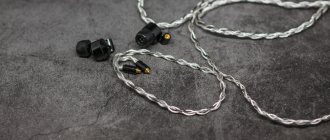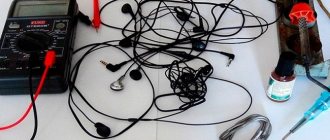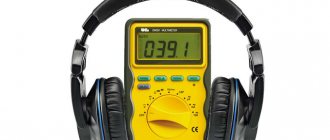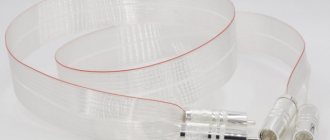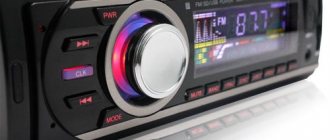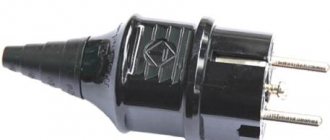Ohm's law makes no exception: whatever cable you choose, the signal will travel through the circuit from the source to the receiver. That's why tech-savvy buyers are asking why they should pay more for speaker cables when there are plenty of cheaper alternatives on sale.
Of course, if sound quality doesn't matter, any wire will do. But if you want to enjoy music or vocals without distortion or loss of range, you will have to choose a special speaker cord. Compare the sound of the same song with different conductors, and the question of what you are paying for will disappear by itself. We will help you choose a cord that is suitable for your tasks.
Why is it better to choose copper cable?
Speaker cables are made from copper, copper with tin or silver, and also from metal with non-metallic additives (for example, carbon). The best choice is pure copper wire. Copper can be monocrystalline or oxygen-free, highly purified. The second variety is the best because it does not contain impurities that would increase the resistance.
Pure copper wire
The sound quality directly depends on how much distortion the conductor introduces. Therefore, the key characteristic of a material is its resistance. The lower the cable resistance, the better the signal. Impedance is affected not only by the material, but also by the diameter and length of the cord, but if the material has high impedance, other characteristics will not improve the sound quality.
Copper has low resistance. Even if the cable cross-section is small, the acoustics sound cleaner with a copper conductor than with a large-diameter cord made of a different material. The usual diameter of copper conductors is 2-4 square meters. mm. With a cord length of 3 m and a diameter of 2.5 sq. mm the resistance will be zero. Keep in mind that the longer and thinner the speaker wires, the greater the resistance, and this affects the sound quality.
Calculation of the cross-section of an acoustic cable for connecting a speaker
According to the recommendations, the resistance of the wire for connecting the speaker should not exceed 5% of its resistance. The table shows the maximum permissible resistance of the cable wires depending on the resistance value of the speaker.
| Permissible cable resistance for connecting a speaker | |
| Speaker resistance, Ohm | Conductor resistance, Ohm |
| 1,0 | 0,05 |
| 2,0 | 0,1 |
| 4,0 | 0,2 |
| 8,0 | 0,4 |
| 16,0 | 0,8 |
When calculating, it should be taken into account that the total resistance of the cable will be twice as large, since it consists of two conductors. The lower the cable resistance, the better.
A meter of copper wire of any cross-section has a known resistance. Therefore, knowing the permissible cable resistance and its length according to the table, you can choose the appropriate one.
| Resistance of a copper speaker cable depending on its length | |||||||||||
| Diameter mm | Section mm2 | Resistance, meter×Ohm | |||||||||
| 1 | 2 | 3 | 4 | 5 | 6 | 7 | 8 | 9 | 10 | ||
| 0,25 | 0,05 | 0,35 | 0,70 | 1,05 | 1,40 | 1,75 | 2,10 | 2,45 | 2,80 | 3,15 | 3,50 |
| 0,50 | 0,20 | 0,09 | 0,18 | 0,26 | 0,35 | 0,44 | 0,53 | 0,62 | 0,70 | 0,79 | 0,88 |
| 0,80 | 0,50 | 0,04 | 0,08 | 0,12 | 0,16 | 0,20 | 0,23 | 0,27 | 0,31 | 0,35 | 0,39 |
| 1,0 | 0,79 | 0,022 | 0,04 | 0,07 | 0,09 | 0,11 | 0,13 | 0,15 | 0,18 | 0,20 | 0,22 |
| 1,5 | 1,77 | 0,01 | 0,02 | 0,03 | 0,04 | 0,05 | 0,06 | 0,07 | 0,08 | 0,09 | 0,10 |
| 2,0 | 3,14 | 0,0055 | 0,011 | 0,017 | 0,022 | 0,027 | 0,033 | 0,038 | 0,044 | 0,049 | 0,055 |
| 2,5 | 4,91 | 0,0035 | 0,007 | 0,011 | 0,014 | 0,018 | 0,021 | 0,025 | 0,028 | 0,032 | 0,035 |
| 3,0 | 7,07 | 0,0007 | 0,0014 | 0,0021 | 0,0028 | 0,0035 | 0,0042 | 0,0049 | 0,0056 | 0,0063 | 0,0077 |
For example, you need to choose a cable 2 meters long to connect a speaker with a resistance of 4 Ohms. From the table “Permissible cable resistance for connecting an audio speaker” we determine that the resistance of the cable wires should not exceed 0.2 Ohm. The cable has two wires, which means that the value must be divided by two, it turns out to be 0.1 Ohm. In the 2 meter column, the appropriate value is 0.08 Ohm; moving our gaze horizontally to the left we see that a cable with a wire cross-section of 0.5 mm2 (diameter 0.8 mm) is suitable.
As you can see, using the above tables, choosing the wire cross-section for the speaker is inconvenient. Therefore, both tables have been combined into one, which will allow you to quickly and accurately select a cable.
| Table for selecting the cross-section of the speaker cable depending on the impedance of the speaker | |||||||||||||||
| Speaker resistance, Ohm | Wire cross-section (mm2) depending on cable length (m) | ||||||||||||||
| 1 | 2 | 3 | 4 | 5 | 6 | 7 | 8 | 9 | 10 | 11 | 12 | 13 | 14 | 15 | |
| 1 | 0,68 | 1,36 | 2,04 | 2,72 | 3,40 | 4,08 | 4,76 | 5,44 | 6,12 | 6,8 | 7,5 | 8,2 | 8,8 | 9,5 | 10,2 |
| 2 | 0,35 | 0,70 | 1,05 | 1,40 | 1,75 | 2,10 | 2,45 | 2,80 | 3,15 | 3,35 | 3,85 | 4,2 | 4,5 | 4,9 | 5,2 |
| 4 | 0,18 | 0,36 | 0,54 | 0,72 | 0,90 | 1,08 | 1,26 | 1,44 | 1,62 | 1,8 | 2,0 | 2,2 | 2,3 | 2,5 | 2,7 |
| 8 | 0,09 | 0,18 | 0,27 | 0,36 | 0,45 | 0,54 | 0,63 | 0,72 | 0,8 | 0,9 | 1,0 | 1,1 | 1,2 | 1,3 | 1,4 |
| 16 | 0,04 | 0,08 | 0,12 | 0,16 | 0,20 | 0,24 | 0,28 | 0,32 | 0,36 | 0,40 | 0,44 | 0,48 | 0,52 | 0,56 | 0,60 |
Now it is enough to find out the required wire cross-section in the cable length column by the speaker resistance. For example, to connect a speaker with a resistance of 4 Ohms, located 3 meters away from the amplifier, you will need a cable with a wire cross-section of 0.54 mm2.
GOST 22483-2012 prescribes a standard range of cable wire cross-sections for manufacturers, and a wire of the selected cross-section may not be available for sale.
| Table of standard cross-sections of electrical wires according to GOST 22483-2012 (IEC 60228:2004) | |||||||||||||
| Standard cross-section of wire cores, mm2 | 0,12 | 0,20 | 0,35 | 0,50 | 0,75 | 1,0 | 1,5 | 2,5 | 4,0 | 6,0 | 10 | 16 | 25 |
| Diameter, mm | 0,39 | 0,50 | 0,35 | 0,67 | 0,98 | 1,13 | 1,38 | 1,78 | 2,26 | 2,76 | 3,57 | 4,51 | 5,64 |
Therefore, I decided to make a table with the help of which the choice of wire cross-section for an acoustic cable can be made taking into account the standard range of sections.
| Selection table for standard speaker cable cross-section | |||||||||||||||
| Speaker resistance, Ohm | Standard wire cross-section (mm2) depending on cable length (m) | ||||||||||||||
| 1 | 2 | 3 | 4 | 5 | 6 | 7 | 8 | 9 | 10 | 11 | 12 | 13 | 14 | 15 | |
| 1 | 0,75 | 1,5 | 2,5 | 4,0 | 4,0 | 4,0 | 6,0 | 6,0 | 6,0 | 10 | 10 | 10 | 10 | 10 | 10 |
| 2 | 0,35 | 0,75 | 1,0 | 1,5 | 2,5 | 2,5 | 2,5 | 4,0 | 4,0 | 4,0 | 4,0 | 6,0 | 6,0 | 6,0 | 6,0 |
| 4 | 0,2 | 0,5 | 0,5 | 0,75 | 1,0 | 1,0 | 1,5 | 1,5 | 2,5 | 2,5 | 2,5 | 2,5 | 2,5 | 2,5 | 4,0 |
| 8 | 0,12 | 0,2 | 0,35 | 0,35 | 0,5 | 0,75 | 0,75 | 0,75 | 1,0 | 1,0 | 1,0 | 1,5 | 1,5 | 1,5 | 1,5 |
| 16 | 0,12 | 0,12 | 0,12 | 0,2 | 0,20 | 0,35 | 0,35 | 0,35 | 0,5 | 0,5 | 0,5 | 0,5 | 0,75 | 0,75 | 1,0 |
The wire cross-section is selected using this table, the same way as using the previous one, only as a result you will immediately receive a standard value.
| Online calculator for calculating wire cross-section by diameter | |
| Enter wire diameter, mm: | |
If you have pieces of copper cable of sufficient length, you can find out whether it is suitable for use as an acoustic cable.
| Online calculator for calculating the diameter of a cable wire cross-section | |
| Enter the wire cross-section, mm2: | |
It is impossible to measure the wire cross-section with instruments, but it can be calculated from the diameter measured with a caliper or micrometer.
| Online calculator for determining the cross-section of a stranded wire | |
| Enter the diameter of one core, mm: | |
| Number of cores in the wire: | |
Any stranded copper wire for electrical wiring will work for the speaker cable. In order to find out the cross-section of a stranded wire, it is necessary to determine the cross-section of one wire, count the number and multiply the cross-section of one wire by their number.
What type of speaker cable coating is there and what is the difference?
- Copper . The classic version is a copper conductor covered with pure copper. The sound will be clear, but there is a drawback: copper oxidizes over time.
- Silver . Silver-coated conductors add brightness and emotion to the sound, bringing high frequencies to the fore.
- Tin . Tinned cables do not oxidize, so the sound quality will be stable for years. Tin smooths out high frequencies.
Pure tinned copper wire
What is twisted pair
When choosing a cable, you will come across the term twisted pair. These are pairs of twisted and insulated conductors. Using two insulated cords at once reduces magnetic interference and provides additional protection from mechanical or chemical damage. These cords are commercially labeled TP: Twisted Pair.
Twisted pair is used in acoustics when the length of the conductors must be significant. But be careful: there are 7 categories of these cords. Choose category 6 or 7 conductors because they are made only from copper, while other pairs can be made from copper-plated aluminum or steel. Pure copper increases the cost of acoustics, but it pays off in purity of sound.
Cables of this type can be single-core or multi-core. This affects the sound: the farther the conductors are spaced from each other, the less coherent the sound.
Multicore twisted pair cable category 6
How to choose a speaker cable
To connect the speakers you need cords like ShVPM 2×0.20 or ShVPM 2×0.5. To achieve high sound quality, you need to combine a minimum length with a maximum cross-section. Simply put, the thicker and shorter the conductor, the better the music will sound. But if, with a short conductor, you can choose a cord with a small cross-section, then a conductor length greater than 3 m can only be compensated for by a larger cross-section.
Copper cords coated with silver are suitable for clubs and concerts. Silver reduces noise interference that occurs with long conductor lengths.
Shielded Speaker Cable
Types of headphone cables
The following types of cords are distinguished:
- By device type – analog and optical. Analog ones are made of copper. The left and right headphone cords must be the same length and made of 99.99% pure oxygen-free copper. The purer the copper, the more detailed the sound analog cables convey. Optical cords are not affected by electromagnetic waves (unlike analogue ones). The disadvantages of such cables include fragility
- By connection method - balanced and unbalanced. Balanced ones are needed when there is a need to transmit an audio signal over a long distance. These cords use two lines of wire (two cores). In turn, unbalanced cords are not as resistant to interference, so they are not suitable for transmitting sound over long distances.
- By type of connectors - 2.5 mm, 3.5 mm, 6.25 mm, USB and gold-plated connectors. The choice of connector depends purely on what output is available on the sound source. The most popular is the 3.5 mm jack, which is found in many smartphones (for now), players and computers. 6.25mm jacks are typically found in audio equipment.
Gold-plated connectors are usually used in advanced headphones. They are designed to improve sound quality. Ideally, the plug and socket should be made of gold, but this option is rare due to the price.
How to choose speaker cable for home theater
To connect a home theater you need not only an acoustic cable, but also an optical cable; we will focus on acoustics. Firstly, you will have to buy two conductors: one will connect the speakers to the amplifier, the other to the AV receiver. You can save money if you buy the cord cut by the meter.
But we recommend ready-made conductors with connectors at the ends. If you choose a pre-cut cord, you will have to crimp the cable and design the connectors yourself. Ready-made solutions are much more reliable.
If your budget allows, buy conductors made of ultra-pure oxygen-free copper. They are marked OFC. Production leaders - Audioquest, Chord, Straight Wire. Interconnect cable from one of these brands costs $50 per half-meter pair, and speaker conductor costs $30 per meter.
TOP 5: Headphone cables - Effect of wire on sound:
| Model | Description | |
| 1. MiniJack-MiniJack from Monoprice 10$ | Headphone cable 3.5 mm to 3.5 mm: detachable and twisted; | |
| 2. MEE Audio cable with MMCX 100$ | Balanced headphone cable: 4-core wire with adapters; | |
| 3. Pirole TPE 3B L-shape from $10 | Headphone cable with microphone; | |
| 4. Hybrid Audio cables from $100 | Acoustic audio cable for headphones: audiophile, handmade; | |
| 5. ISN Hi-Fi Audio cables from $50 | MMCX headphone cable: high-quality and inexpensive cord. | |
ISN Hi-Fi Audio Cables
MMCX headphone cable - high-quality and inexpensive cord
Cable ISN Hi-Fi Audio – MMCX cable for headphones, high-quality and inexpensive cord. Excellent appearance, high-quality assembly and materials, and a noticeable difference in sound quality are signs of real audiophile cables (the manufacturer has many options), albeit at an entry level.
If you're looking for an affordable, high-quality, comfortable headset cable that will improve the sound of your headphones, be sure to consider ISN Audio products. An excellent option for high-quality headphones in the middle and higher price segments in the region of $100-250.
Connectors for connecting headphones to the headset cable: MMCX and 2 Pin
- The MMCX connector is a single plug with the ability to rotate the headphones around its axis. Allows you to adjust the fit of vacuum headphones or earbuds more precisely. But such connectors break more often.
- 2 Pin connector – 2 plugs, you can’t turn the headphones. It is impossible to adjust the fit for yourself as precisely as with MMCX. But they break less often.
Three optimal MMCX cables from ISN
- ISN S16 is the least colored sound. Good bass, stage and detail. This headphone cord is suitable for any model (with dark or light sound);
- ISN C16 – the cable adds bass and emphasizes midrange. Suitable for headphones with light sound. Will help smooth out too bright high frequencies;
- ISN H16 – offers a soft, calm sound with high-quality lows and smoothed highs. Best suited to headphones with light sound.
Hybrid Audio Cables
Acoustic audio cable for headphones - audiophile, handmade
Hybrid Audio is a store, or rather a master, well known in narrow circles, he assembles excellent audio cables for headphones. This is an option for those who want to improve the sound of their existing good headphones.
The master can make an acoustic cable for headphones of any price category. For those on a budget, there is no point, because Hybrid Audio cables are not a cheap pleasure, although I wouldn’t say that they are expensive.
The audio cable for headphones in this case is completely handmade. You can select the desired connectors (MMCX, 2 Pin or others), plugs (3.5 mm angled or straight, 6.3 mm, etc.), material, weave, length.
If you're looking for real audiophile cables, but don't want to pay extra for foreign packaging, check out Hybrid Audio. They are definitely worth the money.
Personal experience using the Hybrid Audio headphone audio cable
Hybrid Audio Cable (Litz copper)
I have 2 cables from Hybrid Audio (about $100 each) . Now the main one is copper litz wire. The cable is quite thick, but moderately soft. In black insulation. With the simplest splitter and “slider”. The entire cost is charged only for the cable, no overpayments.
I chose all the connectors myself, they are also of average quality: angled 3.5 mm mini jack and MMCX adapters. The assembly is good, the cable was not used in “greenhouse” conditions, but it did not break or wear out.
In terms of sound, high-quality copper gave my custom ones greater detail and naturalness in comparison with the cable that came with the kit. Very good for jazz, folk and other instrumental live music, which I listen to more and more.
Hybrid Audio Silver Crystal v3
Silver Crystal v3 (second cable) – silver-plated copper with a high silver content, 10 cores per conductor. It is thicker and much less flexible. But the sound is more interesting in many ways: more low frequencies, the bass itself is more elastic, more natural high frequencies and a more energetic presentation.
This cable has been the main and favorite cable for a long time . It's great for metal. The first cable was Hybrid X2 mini (a hybrid of copper and silver), which has already been sold. With it the sound was calmer, “warmer” and less aggressive.
It cannot be said that all the described differences in sound will immediately “catch” your ears . This is not the same as changing headphones. But you don’t need to listen attentively for several minutes. While I was writing the article, I reconnected the cables a couple of times, and I could hear the difference right away. But here it is worth taking into account that in multi-driver armature headphones the difference in “cable sound” is heard best. In addition, one cable has noticeably lower resistance and the sound in it is simply louder. But even taking these points into account, there are differences.

